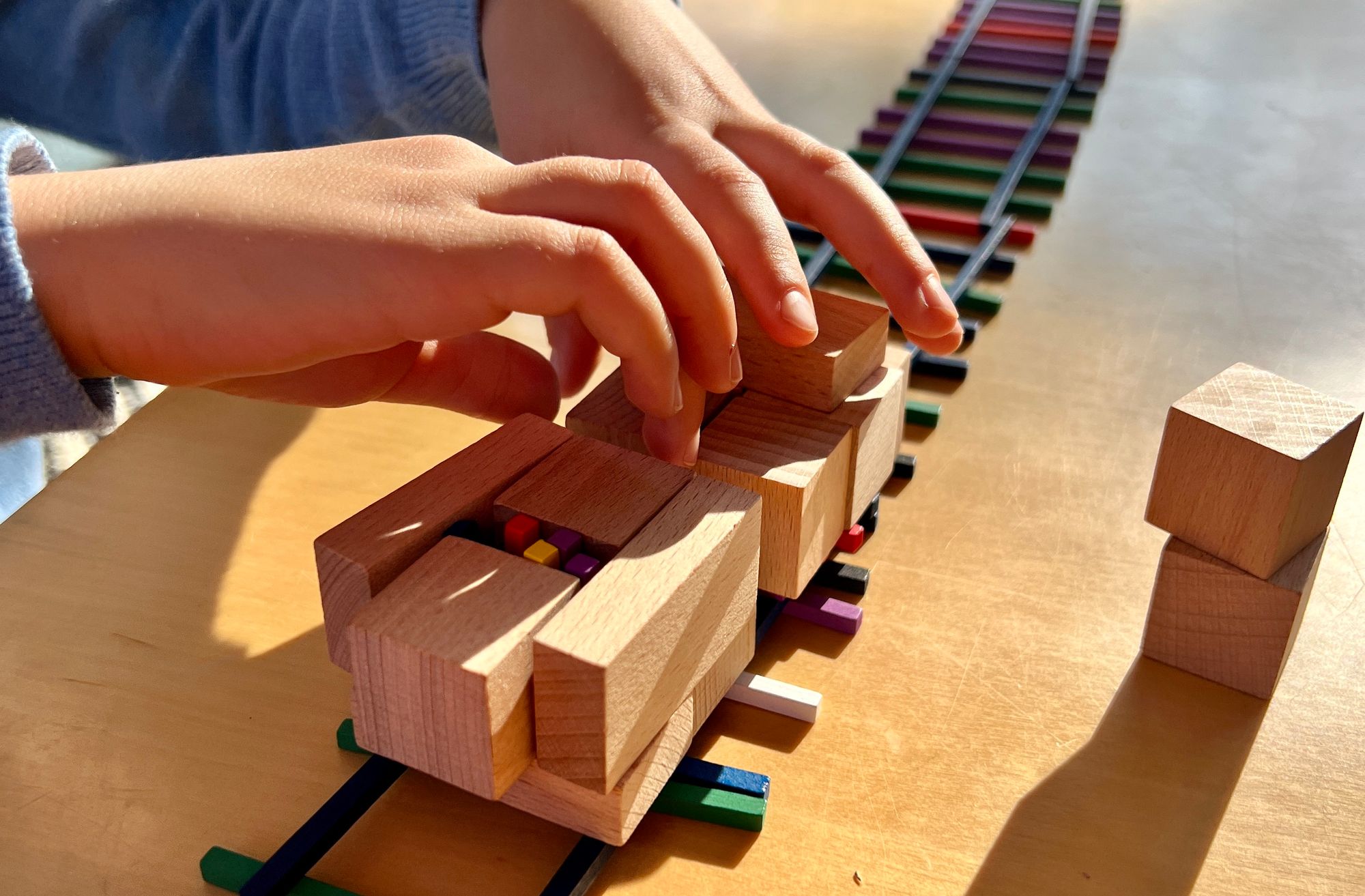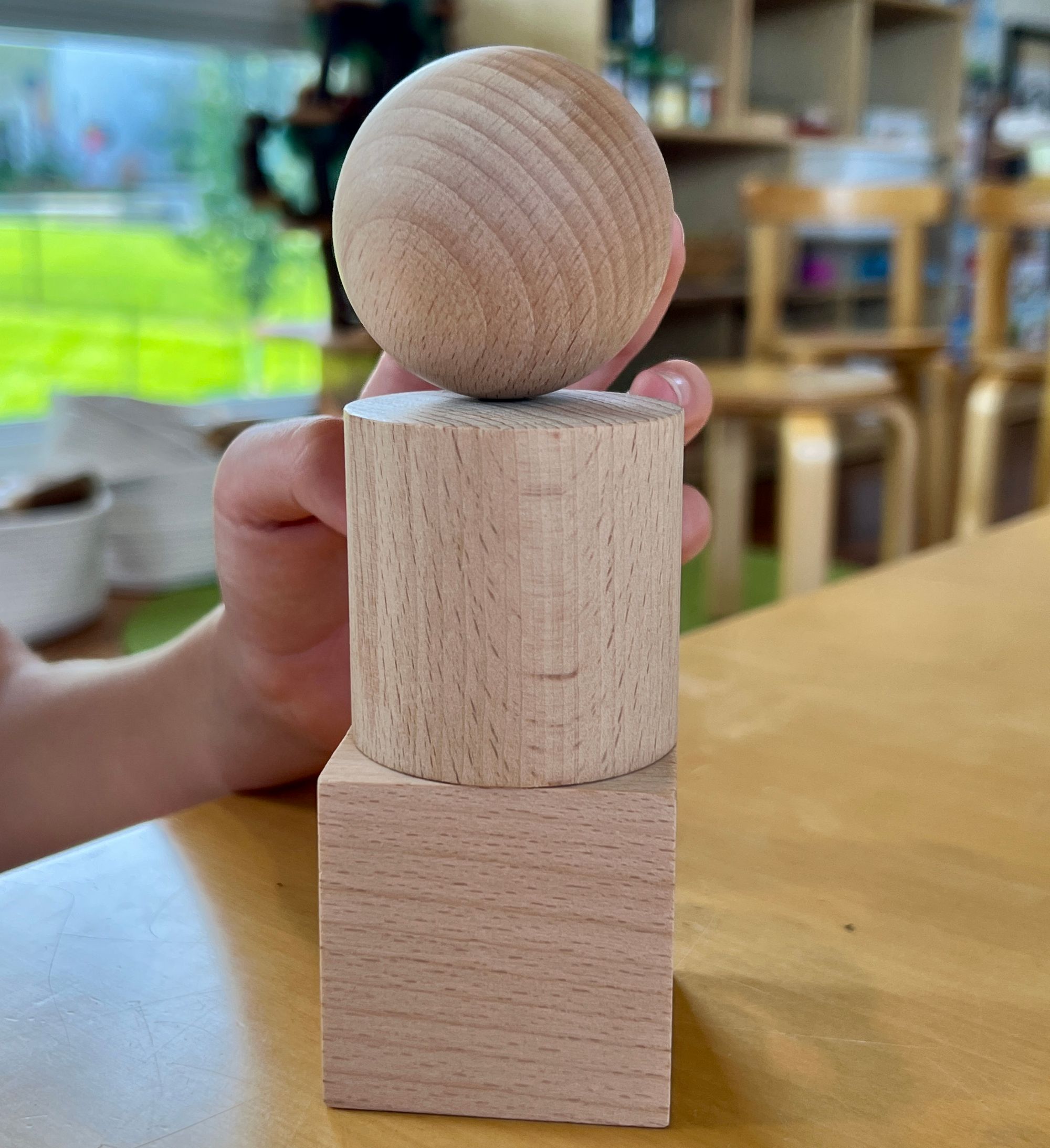From Montessori to Froebel: Our modern homeschool approach Part I

When Spring Break 2020 turned into a global pandemic with zoom classes, and school remained closed that fall, we decided to homeschool.

Our kids had previously attended a Montessori school and loved it, so we wanted to continue that style of education. We liked the autonomy that Montessori schools and educators give to children and the importance they place on following the child and allowing them to focus on their "work," and I was excited to figure out how to implement it at home. After some searching, I found a Montessori Curriculum designed for homeschoolers. My kids loved working with the activities they were familiar with from their Montessori preschool and the novelty of having new and engaging Montessori activities at home.
In the midst of construction & the pandemic, we decided to try homeschooling!
Homeschooling with the Montessori method went well for the first few months. One of my friends was a Montessori preschool teacher at the time, and her knowledge and support were hugely beneficial to me, especially in the early days as we were getting started. After a while, though, it was wearing me out. I was staying up super late most nights, cutting out cards, laminating photos, and trying to figure out (and then make) all sorts of new activities. My friend pointed out that the kids had to take turns in her Montessori classroom, which meant that a newly introduced activity could last a week or longer. But with just two kids, my boys worked through everything quite quickly. In a day or two, both kids had plenty of time to spend with the new activity, and they'd be ready for more new things to do. I felt like I was constantly trying to occupy them with educational activities, and I didn't think that occupying them was what I really wanted to do.

Then I learned about Froebel, the inventor of Kindergarten
I'd never really thought about how Kindergarten began or why we use the German name for a grade in our education system. It was interesting then to find out that a single person - named Frederich Froebel - started Kindergarten in 1836. Before that, young children didn't go to school because people didn't think there was any benefit to educating such young kids.

At one point during Frederich Froebel's career, he was a school teacher and worked in an orphanage. There, he observed the insatiable curiosity and desire of children to learn about the world around them. Froebel's own childhood was isolating and rather sad. He wrote about the uncertainty and irritability that came with idleness and lack of parental affection and positive regard. This had a profound effect on him throughout his adult life. At the orphanage, he saw that young children weren't getting the attention and opportunities they needed to grow and thrive as individuals, so Froebel worked to develop his education philosophy and later created the German system he named Kindergarten. He called his carefully trained teachers "Kindergarteners" because they were the gardeners who nurtured the young sprouts in their garden of children or Kindergarten.

The wooden Froebel "gifts" are an essential component of the original Kindergarten and were used in various ways every day. The gifts are brilliant in their perceived simplicity and, when paired with his education methods, are quite effective in teaching everything from the concepts of harmony in design, geometry and mathematics, creative problem solving, physics, and even storytelling. Today, professors utilize Froebel's methods and materials to educate undergrad and graduate students in architecture and design principles at institutions such as MIT. Yet Froebel remains almost entirely unknown in early education.
The blog continues in Part II with info about Froebel's Gifts and Occupations. Check it out by following the link at the bottom of the page. Please join so you can get updates and comment on this post to let me know what you think!
Thank you so much!!



